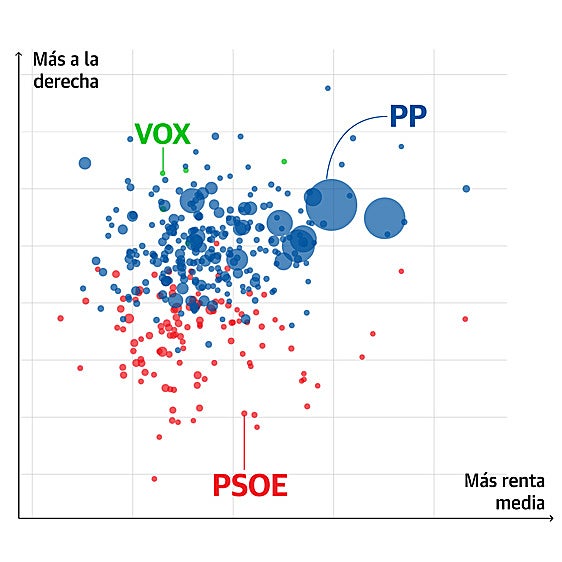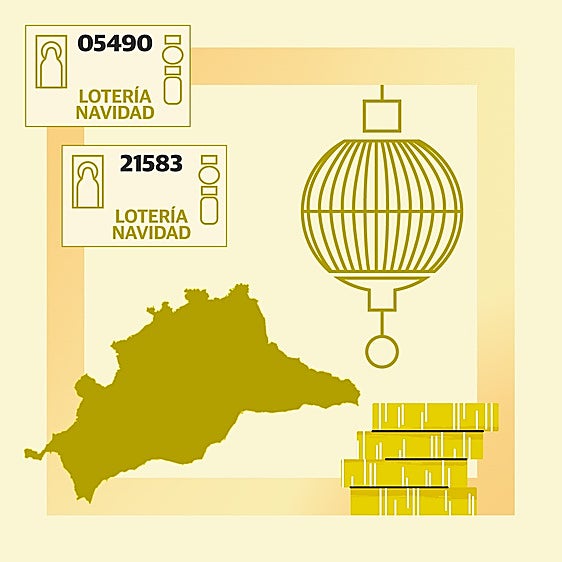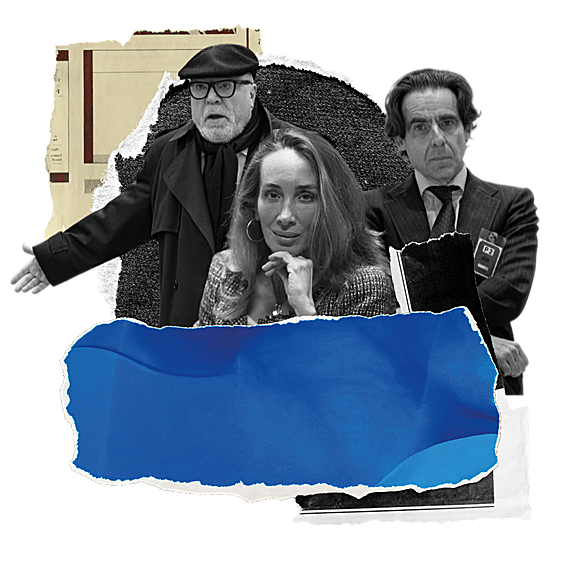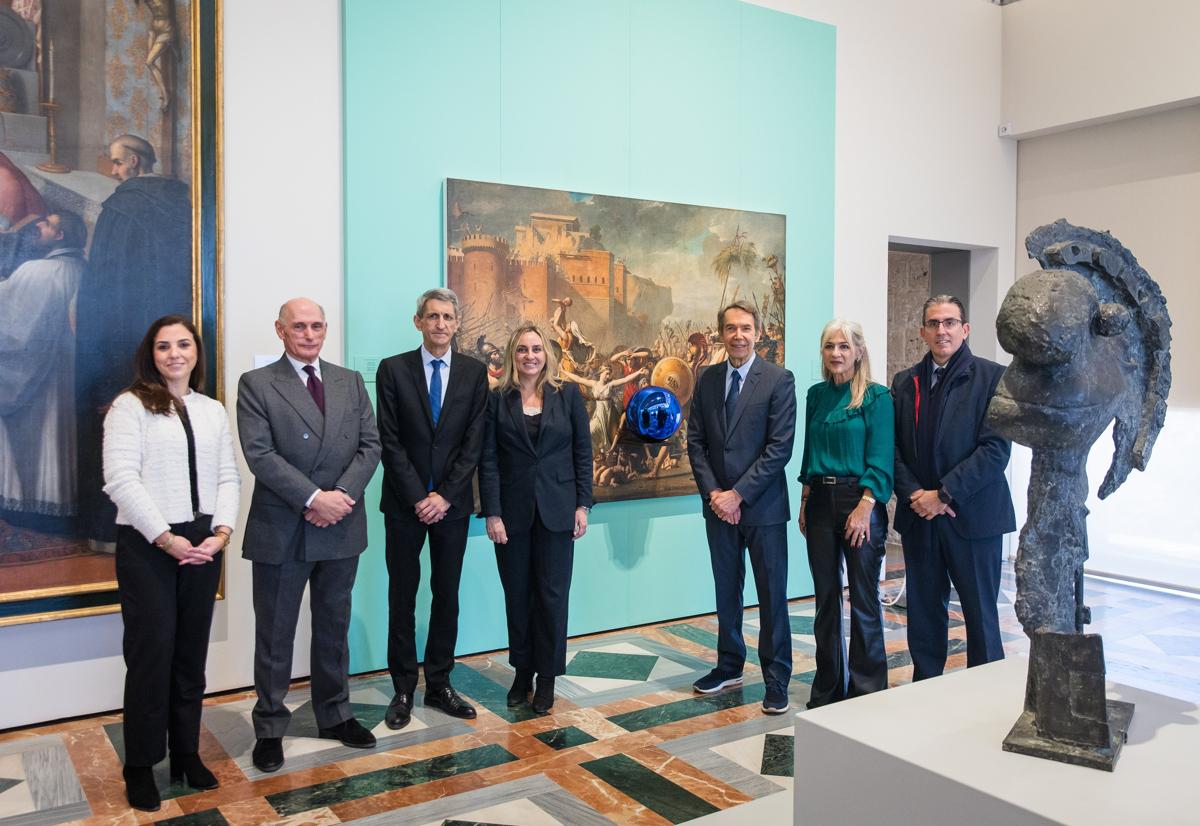Picasso and Koons face-to-face at the Alhambra
An exhibition at the Palacio de Carlos V and the Museo de Bellas Artes shows two works by the Malaga-born painter and three by the American artist based on the classical allegory of the Three Graces
Jorge Pastor
Granada
Friday, 20 December 2024, 18:21
Those who are frequent visitors to the Museo de Bellas Artes in Granada will no doubt have noticed that where Juan de Palenque's The Assumption used to be, there is now a modern reinterpretation of the fable of the Three Graces. Yes, it is not a dream. You are standing in front of The Three Graces (1923) by Pablo Ruiz Picasso himself. It was one of his personal favourites, and it can be seen hanging on the wall in old photos of Picasso's studio in rue La Boétie.
This painting, together with the sculpture Head with Helmet (1933) are the two creations by Picasso on display at this museum of fine arts located in the Palacio de Carlos V at the Alhambra until 16 March 2025.
The Museo Picasso Málaga, in collaboration with Faba (the combined art foundation set up by the Fundación Almine and Bernard Ruiz-Picasso), has put together this exhibition in consultation with the Junta's regional ministry of culture, sponsorship from the Fundación Unicaja and also with the collaboration of the Patronato de la Alhambra y Generalife.
This exhibition is not only hosting these Picasso treasures but also three others by Jeff Koons, one of the most sought-after, contemporary artists in the world today, and who came in person to the formal opening of the exhibition.
Dialogue
Reflections, Picasso and Koons in the Alhambra is the title of this reinvention of, and reflection on, art. The artistic dialogue is designed to occur on two levels: firstly one between Picasso and Koons, and then another of Picasso and Koons with the artists whose works are normally on show at the fine arts museum, works ranging from late Gothic to Baroque.
It should be noted the tour of Reflections does not actually start in the Museo de Bellas Artes but rather in one of the large wall niches of the Palace of Charles V where another version of the Three Graces is located, an imposing sculpture made by Koons between 2016 and 2022 in polished stainless steel with a transparent covering. Inside the museum, The Three Graces and Head with Helmet by Picasso and two creations by Koons from his well-known Gazing Ball series have been installed.
According to Miguel López-Remiro, artistic director of the Museo Picasso and curator of this Reflections exhibition, together with Ricardo Tenorio as director of the Museo de Bellas Artes, "the museum of the 21st century is presented as an amplified space where art transcends limits and establishes a conversation with multiple contexts, a place conceived as a public square and meeting point."
Reflections is part of this vision, seeking to expand the Picasso Museum's foothold in the art world beyond its Malaga city headquarters. The project will be extended to the whole region of Andalucía. The Alhambra is only the first stop, "a unique setting", says López-Remiro, "which invites a profound reflection on the intersection between tradition, the avant-garde and contemporaneity."
The Three Graces, an archetypical representation of beauty and harmony, have historically occupied an ambiguous and fascinating space in the visual arts, which has made them a universal symbol. This group of female figures, celebrated in antiquity for symbolising the generosity of nature, has inspired artists of different periods for centuries. Picasso and Koons both took a very personal view of this allegory, which both distances itself from, and pays homage to, its classical sources.
Picasso's use of the myth
Picasso began The Three Graces during the time he spent in Antibes and he finished it in his Paris studio. He made use of the myth, but projected it as something new. He painted something very special. Firstly with the format, which is very large - about two metres high by one and a half metres wide. Secondly because of a technique (grisaille) in which different shades of the same colour are applied to define the figures as though in 3D, almost as if they were sculptural pieces.
The three young women are not completely naked. The one in the centre is clothed, while the one on the left, half-covered with a cloth, shows a breast and legs, and the one on the right, her back and buttocks. They are connected by their hands. Who are they? Many conjectures have been made. One suggests his wife Olga Jojlova, because of her features, accompanied by Sara Murphy and the Countess of Beaumont. What is clear is that it is a hymn to happiness, as according to mythology Euphrosyne was the goddess of joy, Thalia the goddess of abundance and Aglaya the goddess of beauty.
Jeff Koons revisits the theme, from a contemporary and technological approach. Inspired by porcelain figures, he transforms the delicacy of this material into the perpetual shine of polished steel. He manages to give his Three Graces a festive appearance that contrasts with the melancholy of Picasso's painting.
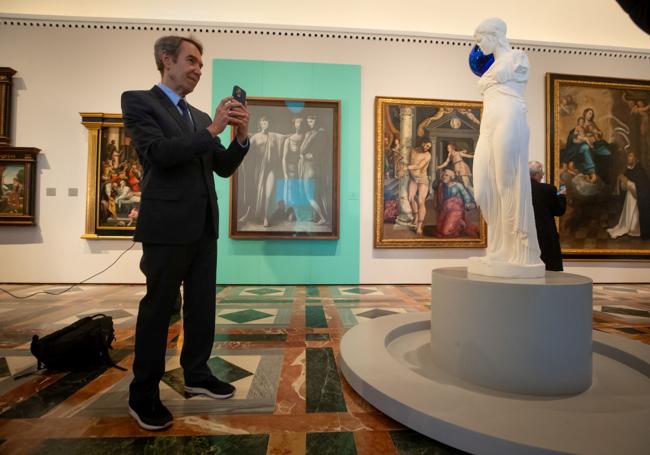
'An honour to exhibit my works in dialogue with those of Picasso'
Andalusian culture minister Patricia del Pozo recalled that the idea of “bringing” Picasso out of his museum could not be realised earlier due to the pandemic. “The project aims to achieve three main objectives: to attract new audiences to monuments and avant-garde art, to increase the impact of the Picasso Museum beyond Malaga, and to showcase Picasso’s influence on contemporary art,” she said.
Bernard Ruiz-Picasso emphasised that Reflections has the power to bring Picasso closer to the public beyond the Malaga venue.
Jeff Koons stated, “It is an honour to exhibit my works in dialogue with those of Picasso. When I think of the Three Graces, I see them as a symbol that has captivated us over the centuries, representing the ideals of grace, beauty and charm.”
José Manuel Domínguez, president of the Unicaja Foundation, highlighted the company’s commitment to Granada. The mayor of Granada, Marifrán Carazo, congratulated the Picasso Museum and the regional government for choosing the Alhambra, Spain’s most visited monument, as a symbol of dialogue and understanding.
Classical mythology is also a source of inspiration in both Picasso's Head with Helmet created in 1933 and Koons' Gazing Ball series (David's Intervention of the Sabine Women), dated between 2015 and 2016.
Picasso's bronze sculpture is yet another example of his deep connection to Greek classicism. The piece takes as its starting point the broad, rounded forms that characterise Picasso's sculptural portraits of his muse Marie-Thérèse Walter, but goes a step further into the experimental world: the use of a tennis ball to shape the eyes - highlights his ability to transform everyday objects into elements with a powerful expressive spark.
